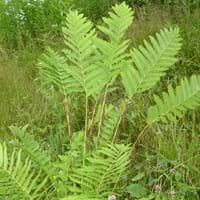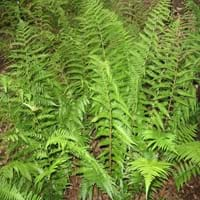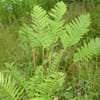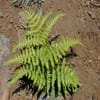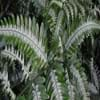Life Span
Perennial
Perennial
Origin
Northeastern United States, Eastern Asia
United States, Southeastern United States, South-Central United States
Types
Not Available
Not Available
Habitat
Forest margins, Roadsides, Terrestrial
Woodlands
USDA Hardiness Zone
2-9
5-9
Sunset Zone
1a, 1b, 2a, 2b, 3a, 3b, 4, 5, 6
Not Available
Habit
Upright/Erect
Clump-Forming
Flower Color
Not Available
Not Available
Flower Color Modifier
Bicolor
Bicolor
Fruit Color
Not Available
Non Fruiting Plant
Leaf Color in Spring
Green
Not Available
Leaf Color in Summer
Green
Green
Leaf Color in Fall
Green
Green
Leaf Color in Winter
Not Available
Dark Green
Leaf Shape
Lance shaped
Toothed
Plant Season
Spring, Summer, Fall
Spring, Summer, Fall, Winter
Sunlight
Full Sun
Full Sun, Partial shade
The pH of Soil
Acidic
Acidic, Neutral
Soil Drainage
Well drained
Average
Bloom Time
Not Available
Indeterminate
Tolerances
Not Available
Drought, Wet Site
Where to Plant?
Ground
Container, Ground
How to Plant?
Divison, Spores
Divison, Spores
Plant Maintenance
Medium
Medium
Watering Requirements
Water Deeply, Water when soil is dry
Requires a lot of watering, Requires regular watering, Requires watering in the growing season, Water Deeply
In Summer
Lots of watering
Lots of watering
In Spring
Moderate
Moderate
In Winter
Average Water
Average Water
Soil pH
Acidic
Acidic, Neutral
Soil Drainage Capacity
Well drained
Average
Sun Exposure
Partial Sun
Full Sun, Partial shade
Pruning
Remove damaged leaves, Remove dead branches, Remove dead leaves, Shape and thin as needed
Remove damaged leaves, Remove dead branches, Remove dead leaves
Fertilizers
All-Purpose Liquid Fertilizer
All-Purpose Liquid Fertilizer
Pests and Diseases
Mealybugs
Red blotch
Plant Tolerance
Drought
Drought
Flower Petal Number
Single
Single
Foliage Texture
Fine
Fine
Foliage Sheen
Matte
Glossy
Attracts
Hummingbirds
Insects
Allergy
Skin irritation
Avoid during Pregnancy, coma, Eye irritation, weakness
Aesthetic Uses
Showy Purposes
Beautification, Landscape Designing, Showy Purposes
Beauty Benefits
Not Available
Not Available
Environmental Uses
Air purification
Air purification
Medicinal Uses
Blood disorders
Nutrients
Part of Plant Used
Buds
Leaves
Other Uses
Culinary use
Air freshner, Decoration Purposes, Employed in herbal medicine, Showy Purposes, Used for its medicinal properties
Used As Indoor Plant
No
Yes
Used As Outdoor Plant
Yes
Yes
Garden Design
Feature Plant, Groundcover, Mixed Border
Groundcover, Mixed Border, Rock Garden, Wall
Botanical Name
OSMUNDA claytoniana
DRYOPTERIS x australis
Common Name
Interrupted Fern
Wood Fern
In Hindi
बाधित फर्न
dixie wood fern
In German
unterbrochen Fern
dixie wood fern
In French
Fern interrompu
dixie wood fern
In Spanish
helecho interrumpido
helecho de madera dixie
In Greek
διακοπεί Fern
dixie wood fern
In Portuguese
Fern interrompido
dixie samambaia de madeira
In Polish
przerwana Fern
dixie wood fern
In Latin
Fern intermissis
Fern Dixie
Phylum
Pteridophyta
Filicinophyta
Class
Polypodiopsida
Filicopsida
Order
Osmundales
Filicales
Family
Osmundaceae
Dryopteridaceae
Genus
Osmunda
Polystichum
Clade
Not Available
Not Available
Tribe
Not Available
Not Available
Subfamily
Not Available
Not Available
Number of Species
Not Available
Not Available
Properties of Interrupted Fern and Dixie Wood Fern
Wondering what are the properties of Interrupted Fern and Dixie Wood Fern? We provide you with everything About Interrupted Fern and Dixie Wood Fern. Interrupted Fern doesn't have thorns and Dixie Wood Fern doesn't have thorns. Also Interrupted Fern does not have fragrant flowers. Interrupted Fern has allergic reactions like Skin irritation and Dixie Wood Fern has allergic reactions like Skin irritation. Compare all the properties and characteristics of these two plants. Find out which of these plant can be used as indoor plant. If you are interested to decorate your house and garden, find out aesthetic uses, compare them and select the plant which will beautify your surrounding. Along with beautification, try comparing medicinal and edible uses of Interrupted Fern and Dixie Wood Fern and you can choose the plant having best and most benefits.
Season and Care of Interrupted Fern and Dixie Wood Fern
Season and care of Interrupted Fern and Dixie Wood Fern is important to know. While considering everything about Interrupted Fern and Dixie Wood Fern Care, growing season is an essential factor. Interrupted Fern season is Spring, Summer and Fall and Dixie Wood Fern season is Spring, Summer and Fall. The type of soil for Interrupted Fern is Loam and for Dixie Wood Fern is Loam while the PH of soil for Interrupted Fern is Acidic and for Dixie Wood Fern is Acidic, Neutral.
Interrupted Fern and Dixie Wood Fern Physical Information
Interrupted Fern and Dixie Wood Fern physical information is very important for comparison. Interrupted Fern height is 60.00 cm and width 60.00 cm whereas Dixie Wood Fern height is 90.00 cm and width 60.00 cm. The color specification of Interrupted Fern and Dixie Wood Fern are as follows:
Interrupted Fern flower color: Not Available
Interrupted Fern leaf color: Green
Dixie Wood Fern flower color: Not Available
- Dixie Wood Fern leaf color: Not Available
Care of Interrupted Fern and Dixie Wood Fern
Care of Interrupted Fern and Dixie Wood Fern include pruning, fertilizers, watering etc. Interrupted Fern pruning is done Remove damaged leaves, Remove dead branches, Remove dead leaves and Shape and thin as needed and Dixie Wood Fern pruning is done Remove damaged leaves, Remove dead branches and Remove dead leaves. In summer Interrupted Fern needs Lots of watering and in winter, it needs Average Water. Whereas, in summer Dixie Wood Fern needs Lots of watering and in winter, it needs Average Water.
